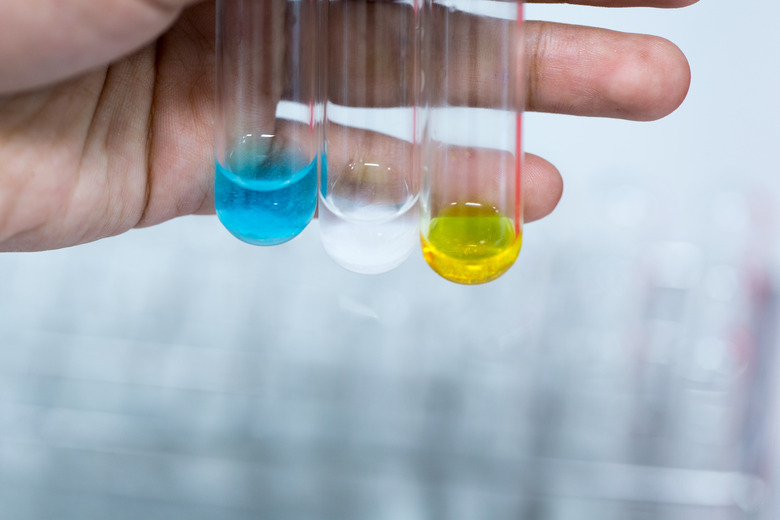List Of Positive & Negative Ions
Each of the elements on the periodic table is capable of forming an ion. Ions are atoms that have either a positive or a negative charge and take part in the process of ionic bonding in order to form a compound. Not all compounds are ionic, but all atoms are capable of forming an ion.
TL;DR (Too Long; Didn't Read)
Ions — electrically charged atoms — can carry a positive or negative charge. Positive ions are cations and are typically metals like copper or sodium. Negatively-charged ions are anions, formed from nonmetallic elements like oxygen and sulfur.
Formation of Ions
Formation of Ions
All atoms contain components called subatomic particles. Neutrons are neutral particles that are found in the nucleus of the atom along with the positively charged protons. The number of protons determines the element identity of the atom, and neutrons help determine the particular isotope of the atom. Electrons are negatively charged and freely circle the nucleus in three-dimensional orbitals. The ability of electrons to move across orbitals and jump from atom to atom contributes to the process of ion formation. Atoms give up electrons to other atoms to form positively charged ions called cations, and atoms that pick up extra electrons from other atoms form negatively charged ions called anions.
Cations
Cations
Cations are formed from metal atoms such as copper, gold, silver and sodium. This accounts for about two thirds of the entire periodic table. Loss of electrons will turn a neutral atom positive when the atom has a greater number of protons versus electrons left in the atom. Metals are excellent conductors of electricity due the fact that the electrons move easily from one atom to the next carrying electrical energy along with them. Metals can be found in groups one through 16 on the periodic table. All metals in group one form cations with a +1 charge, metals in groups two through 12 and group 16 form cations with a charge of +2, metals in groups thirteen and fifteen form a +3 cation and metals located in group 14 form a +4 cation.
Anions
Anions
Anions are formed from the nonmetal elements on the periodic table such as oxygen, sulfur and carbon. These elements are found in groups 13 through 17, and each one of them gains electrons from other atoms during the ionic bonding process. This gain results in a greater number of negatively charged electrons than of positively charged protons within a previously neutral atom. They do not conduct electricity. The nonmetals in groups 13 and 15 each form a -3 cation, while the nonmetals in group 14 form anions with a -4 charge. Group 16 nonmetals form anions with -2 charges, and the halogens of group 17 each form a -1 charged anion.
Cite This Article
MLA
LaRoche, Carolyn. "List Of Positive & Negative Ions" sciencing.com, https://www.sciencing.com/list-positive-negative-ions-7159393/. 30 April 2018.
APA
LaRoche, Carolyn. (2018, April 30). List Of Positive & Negative Ions. sciencing.com. Retrieved from https://www.sciencing.com/list-positive-negative-ions-7159393/
Chicago
LaRoche, Carolyn. List Of Positive & Negative Ions last modified March 24, 2022. https://www.sciencing.com/list-positive-negative-ions-7159393/
